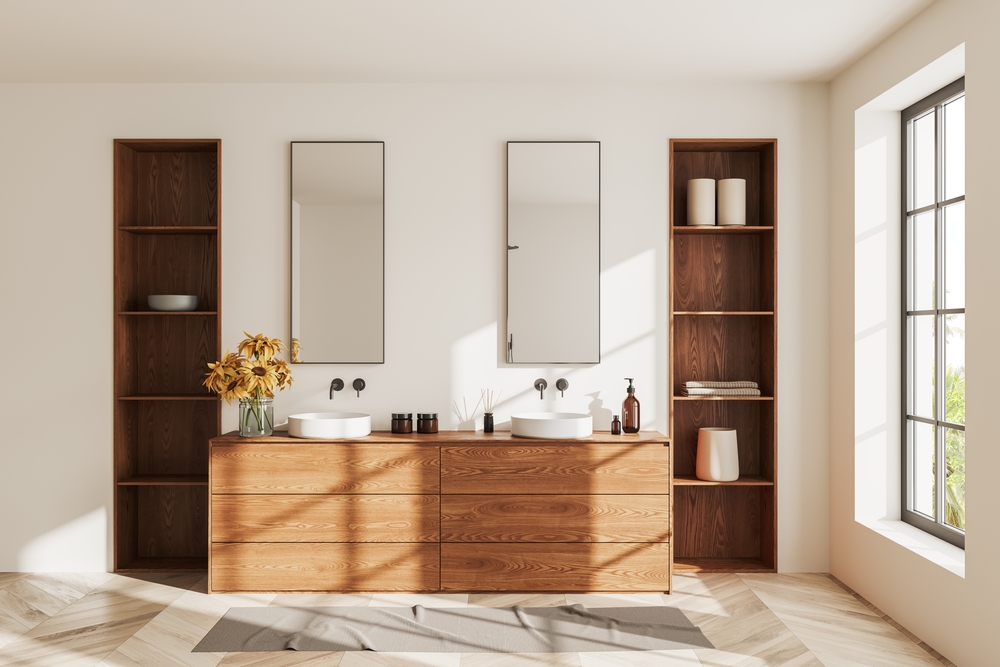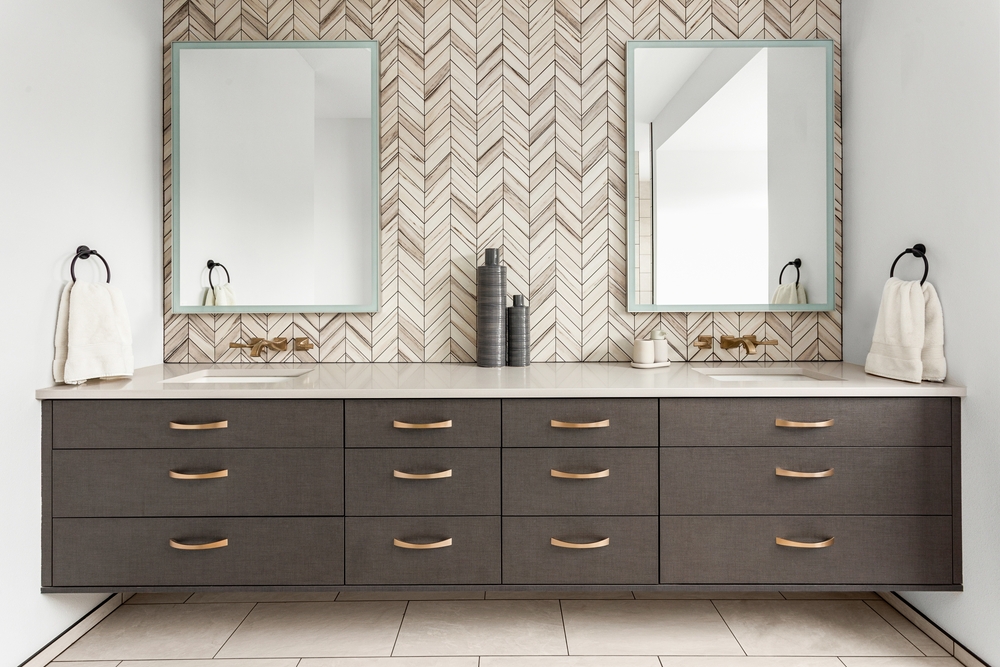How to Replace Bathroom Cabinet

Imagine entering a bathroom where every detail reflects your taste and your storage needs are perfectly met. Replacing your bathroom cabinet is not just a renovation task; it’s an opportunity to transform your space into a stylish, functional retreat. But do you know how to replace bathroom cabinets?
Are you tired of your outdated bathroom cabinet and craving a fresh look? We’ll reveal the steps, tips, and tricks for selecting and installing a new cabinet to breathe new life into your bathroom.
Let’s dive in and discover how you can easily achieve a stunning cabinet replacement!
How to Replace Bathroom Cabinet
Assessing your current bathroom cabinet
To replace a bathroom cabinet, start by thoroughly assessing your current setup. Evaluate its condition, style, and functionality. Look for signs of wear, water damage, or an outdated design, and carefully measure its dimensions: width, height, and depth.
Consider how the cabinet’s placement fits with the rest of the bathroom’s vanity. This assessment will help you pinpoint what you like and dislike about the current cabinet and guide your choice for a new one.
Additionally, check for any underlying issues, such as wall damage or plumbing problems, that may need addressing before the installation. A detailed evaluation ensures that your new cabinet fits well and enhances your bathroom’s overall look and functionality.

Gathering necessary tools and materials
You should gather the essential tools, including flathead and Phillips screwdrivers, a drill, a level, a measuring tape, and a pencil. A stud finder can also be invaluable for locating wall supports.
Furthermore, ensure you have safety equipment such as work gloves and safety glasses. Collect materials like screws, wall anchors, and shims to secure the installation. We advise you to have patching materials like spackle or drywall compound ready to address any wall damage.
You may also need finishing materials like caulk or paint for a polished look. Having all necessary items ready before you begin will prevent interruptions and frustrations, allowing you to focus on the task at hand and achieve better results.
Removing the old cabinet
Removing the old cabinet requires care to avoid damaging walls or surrounding fixtures like your bathroom mirror. So, do you know how to remove bathroom cabinet? Start by clearing out all items and disconnecting any plumbing if necessary. Use a utility knife to remove the caulk or sealant around the edges.
Next, locate and remove the screws securing the cabinet to the wall; these are usually found along the back edge or in the corners. For larger cabinets, it’s a good idea to enlist a helper to avoid accidents during removal. Gently pull the cabinet away from the wall, being careful of any hidden fasteners or adhesive.
We advise you to proceed slowly and methodically, keeping an eye out for electrical wires or plumbing behind the cabinet. In tight spaces or with particularly large cabinets, consider cutting the cabinet into smaller, more manageable pieces to ensure a safer removal process.
Preparing the space for installation
After removing the old cabinet, it’s crucial to thoroughly prepare the space for the installation of your chosen cabinets. Begin by inspecting the wall for any damage, unevenness, or signs of water damage and mold. Address these issues before moving forward, as they can affect the new cabinet’s durability.
Next, fill any holes left by the old cabinet with spackle or drywall compound, then sand the area smooth once it’s dry. Clean the wall to remove dust, debris, and old adhesive. Use a stud finder to locate and mark the wall studs, which will help in positioning the screws for the new cabinet.
Finally, measure and mark the outline for the new cabinet, using a level to ensure that your lines are straight. This preparation will provide a solid base for the new cabinet, help prevent future problems, and ensure a professional finish.
Installing the new cabinet
Begin by positioning the new cabinet according to your markings, ensuring it is level and properly aligned. Next, mark the mounting points on the wall, ensuring they align with the cabinet’s support structure. Double-check all measurements and alignments to confirm accuracy.
Then, drill pilot holes at the marked points, using a bit slightly smaller than your screws to prevent splitting the wood. Attach the cabinet to the wall, starting with the top corners for stability and then moving downward.
If necessary, use shims to keep the cabinet perfectly level. Throughout the installation, frequently check the level and adjust as needed before fully tightening the screws.
After securing the cabinet, test its stability by gently pushing on it to ensure it feels solid and immobile. Ultimately, address any gaps between the cabinet and the wall by using shims or adjusting the mounting to achieve a clean, seamless appearance.
Finishing touches
Installation and alignment
The final steps involve adding the finishing touches to complete the installation. If the cabinet doors were removed, begin by reinstalling them, making sure they are level and properly aligned. Adjust the hinges as needed to ensure smooth operation.
Next, attach hardware such as handles or knobs, following the manufacturer’s placement instructions. Test all doors and drawers to confirm they open and close smoothly.
Finally, apply caulk along the edges where the cabinet meets the wall, using a bathroom-grade, mold-resistant product. This will create a seamless appearance and help prevent moisture infiltration.
Aesthetic completion and final checks
If painting is necessary, protect the surrounding areas and apply the paint carefully for a professional finish. Allow the caulk and paint to dry completely. Then, perform a final inspection of the installation, making any last-minute adjustments as needed.
Clean the cabinet thoroughly and dispose of old materials and packaging properly. These final touches will ensure that your new bathroom cabinet functions well and looks polished and professional.

Conclusion
Replacing your bathroom cabinet is a fantastic way to update your space and improve its functionality. Now that you know the steps on how to replace bathroom cabinets, you are prepared to tackle this project.
By carefully evaluating your existing setup, selecting the right cabinet, and following precise installation steps, you can achieve a stylish and functional update to your bathroom. With the right preparation and attention to detail, your new cabinet will enhance the look of your bathroom and effectively meet your storage needs.
Enjoy the transformation and the refreshed look of your space!
